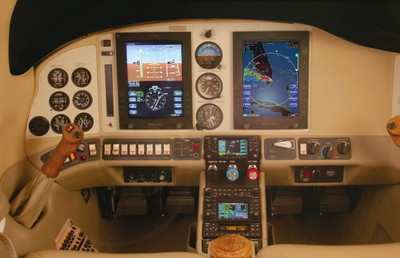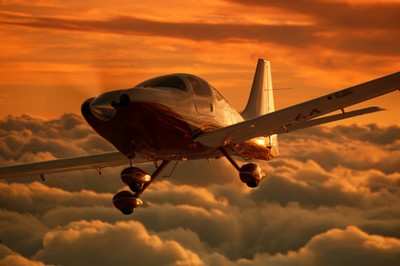Thu, Mar 12, 2009
Claims Plane's PFD Was "Defective And Dangerous"
 The family of a pilot killed in a February 2008 landing
accident has sued avionics manufacturer Avidyne, claiming the
accident plane's primary flight display was "defective and
dangerous"... despite a National Transportation Safety Board ruling
that pilot error was to blame.
The family of a pilot killed in a February 2008 landing
accident has sued avionics manufacturer Avidyne, claiming the
accident plane's primary flight display was "defective and
dangerous"... despite a National Transportation Safety Board ruling
that pilot error was to blame.
The Oregonian reports the $10.5 million wrongful death and
negligence suit was filed on behalf of the widow and three children
of Dr. Richard Otoski. The suit claims problems with the Lancair
Columbia 400's autopilot and attitude/heading reference system
(AHRS) were causal to the aircraft crashing while Otoski attempted
to make an ILS approach in hard IFR conditions to Portland
International Airport (PDX) on February 16, 2008.
As ANN reported, the pilot and sole occupant
was killed when the plane crashed alongside Runway 10-Right at PDX.
The aircraft was making its second approach to land in heavy fog
when it deviated from the approach path -- in an apparent attempt
to go missed -- and clipped a tree. The observed runway visual
range (RVR) was below IFR minimums at the time of the accident.
"The airplane's turn to the southeast was consistent with the
missed approach course of 160 degrees; however, a climb to 900 feet
is required prior to commencing the right turn, as outlined on
approach plate's missed approach instructions," reads the NTSB
Probable Cause report. "It appears the pilot likely misinterpreted
the missed approach instructions by making the right hand turn
prior to initiating a climb to 900 feet, which resulted in the
subsequent impact with the tree.

"...The airplane continued on the collision course before
impacting the ground in a left wing low, nose down attitude, about
845 feet from the initial impact point with the tree," continues
the report. "It then traveled through an airport perimeter fence
before coming to rest on a perimeter road in an upright position,
about 15 feet from the ground impact point."
Otoski was killed on impact. The Probable Cause report notes
"[n]o preimpact anomalies were found during an examination of the
airframe and engine. The airplane's avionics components revealed
that they were too thermally and impact-damaged to provide any
data." The Board's determination was the accident was due to "the
pilot's failure to follow the missed approach procedure.
Contributing to the accident were the fog and below landing
minimums visibility conditions."

Also named in the lawsuit is the former Lancair Certified
Aircraft -- later Columbia Aircraft Manufacturing Company -- which
is now owned by Cessna.
More News
Takeoff Roll The process whereby an aircraft is aligned with the runway centerline and the aircraft is moving with the intent to take off. For helicopters, this pertains to the act>[...]
“We’re proud of the hard work that went into receiving this validation, and it will be a welcome relief to our customers in the European Union. We couldn’t be mor>[...]
"Aircraft Spruce is pleased to announce the acquisition of the parts distribution operations of Wag-Aero. Wag-Aero was founded in the 1960’s by Dick and Bobbie Wagner in the >[...]
IDENT Feature The special feature in the Air Traffic Control Radar Beacon System (ATCRBS) equipment. It is used to immediately distinguish one displayed beacon target from other be>[...]
Aero Linx: Pararescue Air Force Pararescuemen, also known as PJs, are the only DoD elite combat forces specifically organized, trained, equipped, and postured to conduct full spect>[...]
 ANN's Daily Aero-Term (05.10.24): Takeoff Roll
ANN's Daily Aero-Term (05.10.24): Takeoff Roll Aero-News: Quote of the Day (05.10.24)
Aero-News: Quote of the Day (05.10.24) Aero-News: Quote of the Day (05.11.24)
Aero-News: Quote of the Day (05.11.24) ANN's Daily Aero-Term (05.11.24): IDENT Feature
ANN's Daily Aero-Term (05.11.24): IDENT Feature ANN's Daily Aero-Linx (05.11.24)
ANN's Daily Aero-Linx (05.11.24)





